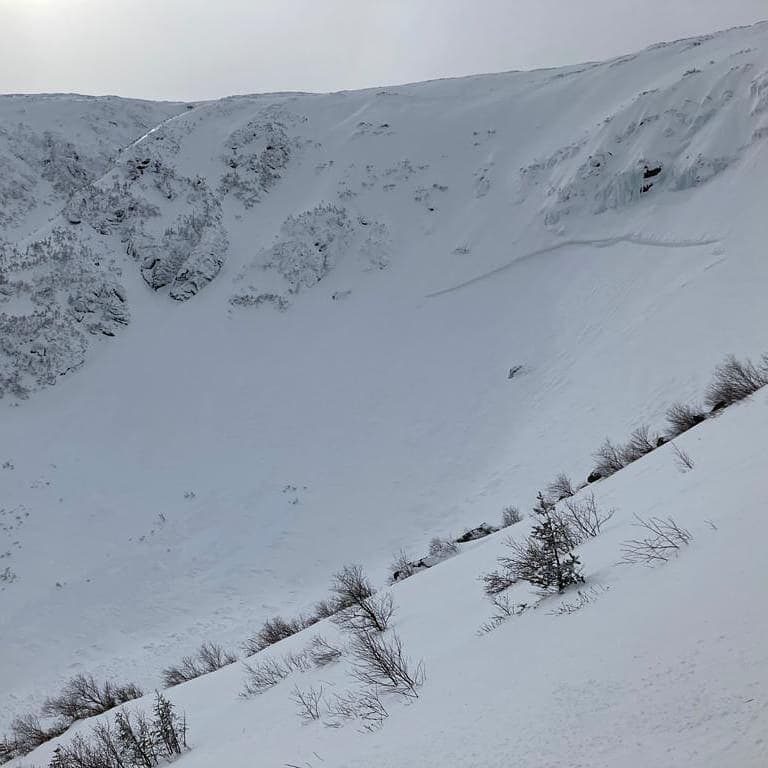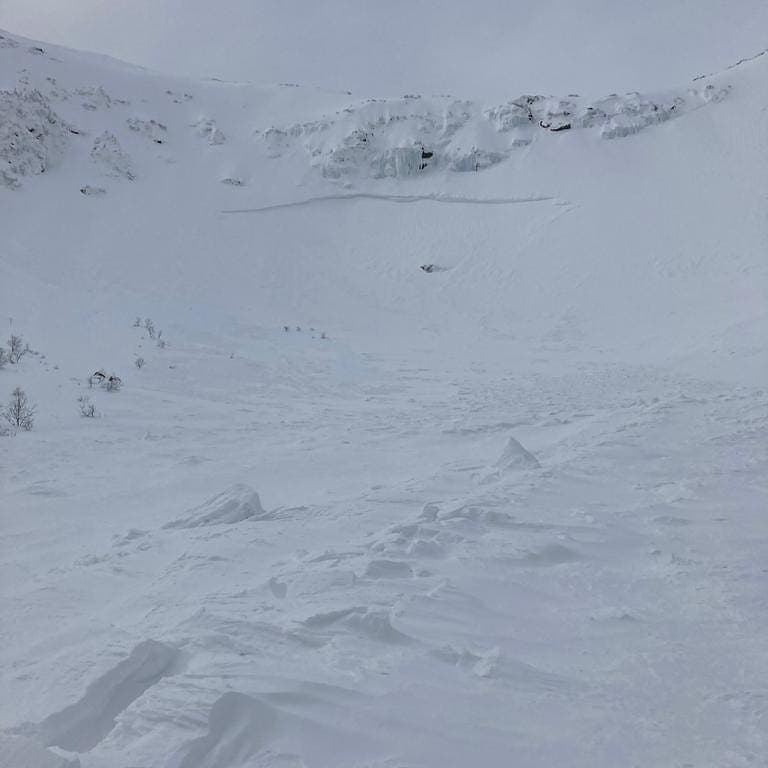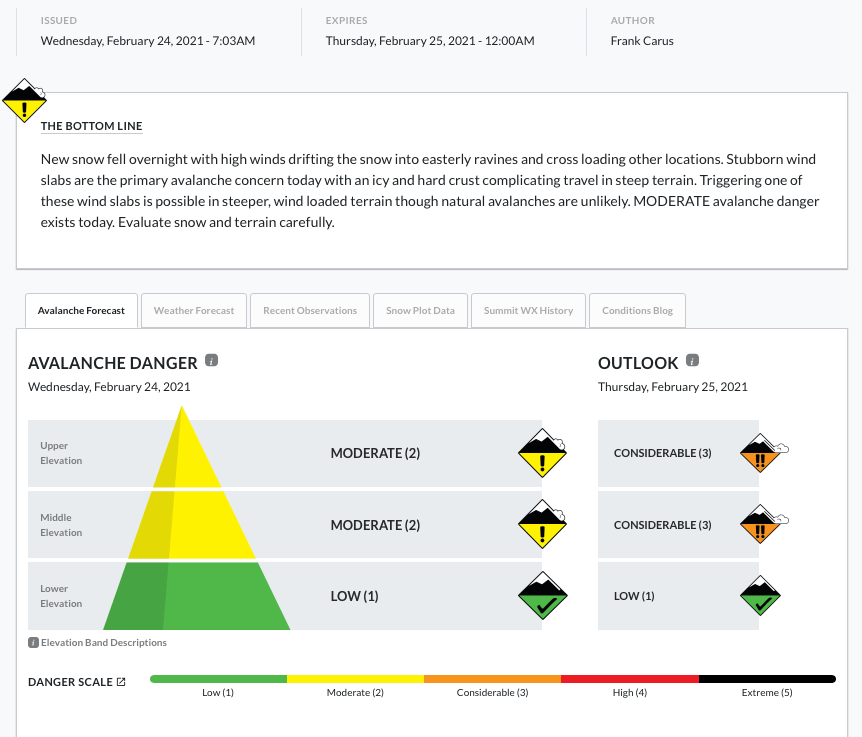
Mount Washington Avalanche Center shared a few images on Instagram yesterday of a huge natural avalanche in Tuckerman Ravine on Mount Washington, NH. Scary stuff…
In case you are wondering what an unsurvivable avalanche looks like, this is it. This large to very large (D2.5) natural avalanche occurred last night (2/23-24) when WNW winds transported what remained of the loose snow from the expansive and mostly flat alpine plateau we call the “alpine zone” or “fetch”. A sum total of 6.4″ of snow was recorded in the past 7 days. Yes, just six inches. Crown thickness of this avalanche averages a little under 3 feet. The debris pile is somewhere around a football field in size averaging 6 feet in depth. It appears to have run on the ice crust layer that developed on Feb 16.
When it comes to wind slabs, Mount Washington and Tuckerman Ravine are an anomaly that defies many things that you will learn in your avalanche course, most of which are geared to western snowpacks. Digging will not help you discern avalanche hazard nearly as well as weather events, both recent and current weather. Our direct action avalanche regime is really straightforward to predict, assuming unconscious bias, group dynamics and other less quantifiable factors don’t cloud your judgement. Read and study the avalanche forecast and weather records every day. Complete ignorance of avalanche hazard is another issue, and is one of my greatest fears and could lead to a devastating mass casualty event similar to the Connaught Creek incident. Warn your friends. It’s real here.
Please respect avalanche paths and runouts, including the floor of Tuckerman Ravine, no matter the danger rating.
Yesterday’s rating was Considerable, with Moderate today due to reduced wind loading concerns. Safe travel with appropriate PPE should be the norm, not the exception. Let’s not add to the already high number of deaths this season. March is the deadliest month on Mount Washington. Let’s turn that around. -FC


